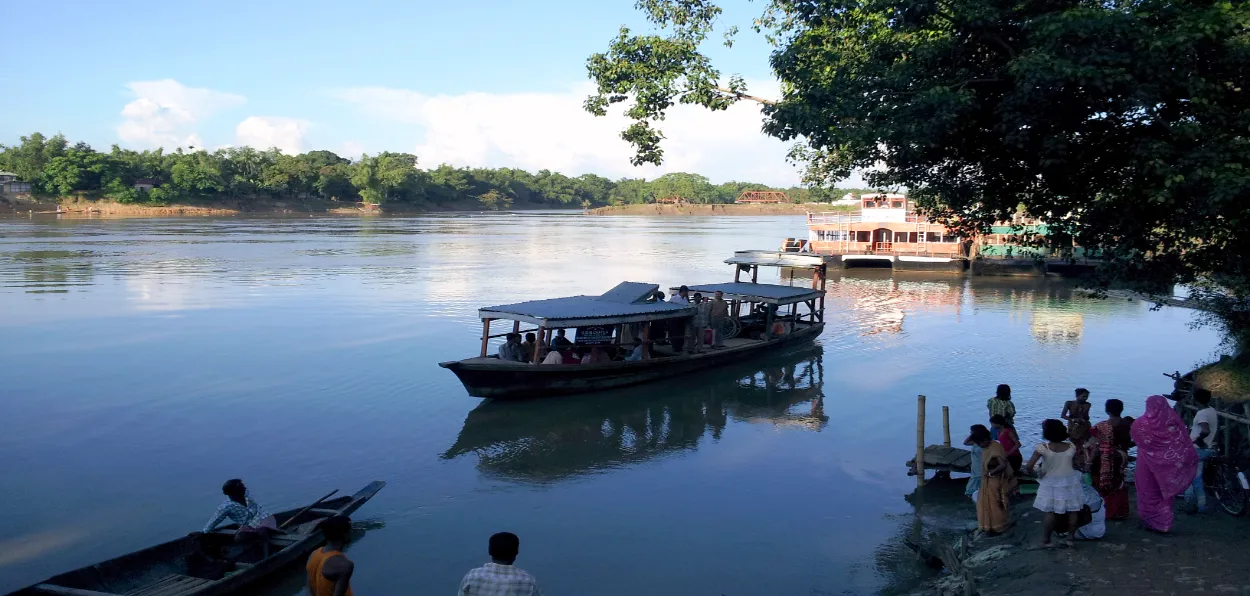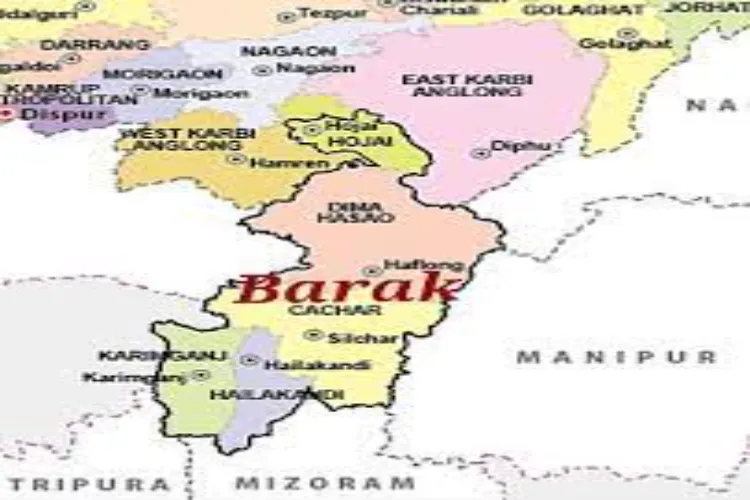
Dr. Ohi Uddin Ahmed
The Nankar Kiaran community of Barak Valley of southern Assam is economically and socially one of the most marginalized Muslim Communities. They are the descendants of the agricultural laborers; simply serfs and indigenous people who converted to Islam from lower castes. In the erstwhile Sylhet-Cachar region (Sylhet in Bangladesh and Cachar in Assam) the landed aristocracy and powerful landlords prevailed with a rigid system.
The Kiran, who were the serfs or subjects of the landlord, are of two categories – independent Kiran and Nankar Kiran. The word Kiran was perhaps a corrupted form of ‘Kisan’ (farmer). The former served the Zamindar as agrarian labour or sharecropper and the latter as slave or serf. The word Nankar perhaps originated from the Persian word ‘Nan’ meaning bread. Therefore, a servant employed only with the provision of food instead of a salary came to be known as Nankar Kiran. In place of wages or remuneration, they were provided with a plot of land for house and cultivation. They were obliged to serve the landlords with miscellaneous jobs including their womenfolk serving in the house of Zamindar and often used as a means of entertainment.
The erstwhile Sylhet region of East Bengal has been experiencing a mass conversion of the indigenous population to Islam since the 14th century. Sylhet and its adjoining region were mainly inhabited by the non-Aryan fisherman tribes such as Kaiberta, Patinini, Das, Namasudra, and other castes downgraded by the Aryan social order associated with the occupation of fishing and cultivation. A large-scale religious conversion took place among this indigenous population in the 14th century after the advent of the famous Sufi saint Sheikh Shah Jalal Yemeni (d. 1343 CE) with 360 awlias (disciples). The farmers, hunters, and fishermen embraced Islam en mass after they were inspired by the Islamic message of social equality.
However, conversion to Islam did not mitigate caste as it never changed their socioeconomic conditions. Their class and status remained the same. The existing agrarian system based on feudal or semi-feudal structure led to the subinfudation of farmers. Subinfudation is the subdivision of a feudal estate by a vassal who in turn becomes a feudal lord over his tenants. The converts from divergent castes took to farming for their livelihood under the mirasdar called Talukdars, Tapadars, or Choudhuries, came to be oraganise as a class known as Kiran. The Nankar Kiran were worst off as they were being exploited by the landlords to such an extent that their condition was nothing less than serfs. This system was comparable to European Feudalism.
Barak Valley comprises neighbouring districts of Sylhet - Cachar and Hailakandi and Karimganj (a part of the then Sylhet) characterized by scanty human settlement due to natural reasons. But it had abundant uncultivated fertile land. Therefore, large-scale migration took place from Bengal districts, especially Sylhet. The Bengali Muslims of Barak Valley were mostly Bengali migrants from neighboring Bengal district with scattered local conversion. The Kiran or Nankar Kiran were also mostly migrants from Bengal districts who were lured by the abundant fertile land. Thus, agriculture was the prime occupation of these people; they mostly worked on paddy cultivation.

The Kiran was originally not an ethnic group, caste, or race but rather a mixed class of people associated with agriculture. Their origin could be traced in the context of the rigorously stratified agrarian system on the one hand and a rigid social system on the other. On the eve of the Muslim occupation of Sylhet, the majority of the indigenous people were predominantly associated with fishing, cultivation, and other lowly occupation. This social segregation resulted in the ruthless social differentiation that the majority of the natives were branded as low even to the extent of outcastes or untouchables. These people embraced Islam to get rid of social inequality and injustice.
Their conversion to Islam did not mitigate caste and social discrimination rather they were simply added to the new social organization with the same class and status. The Muslim occupation of East Bengal in general and Sylhet, in particular, resulted in far-reaching changes in the prevailing agrarian system. The Turko-Afghan rulers to enhance revenue ushered in an era of massive extension of agriculture to the uncultivated forested land leading to the conversion to Islam on a large scale.
During the Turko-Afghan period, Zamindar or Talukdars were revenue collectors and Jagirdars enjoyed land grants. But during the colonial period, the Zamindars became owners of the land. As a consequence of the introduction of the permanent settlement, Choudhuries were major Zamindars with Talukdars and Tapadars principals becoming landlords. Therefore, the agrarian system came into existence in the erstwhile Sylhet and parts of Barak Valley was a mixture of colonial and pre-colonial system with the emergence of a powerful landed class. They were considered Rajas (kings) in their respective jurisdictions with exclusive rights over land characterized by the merciless oppression and exploitation of their subjects. As the zamindar became the sole owner of the land, the subjects were left at their tender mercy so that they could evict or expel them from their procession, even forced eviction. Under such circumstances, the landless farmers were left with no other scope but rather accept rigorous terms just like slaves. The condition of Nankar Kiran was worst off, provided a plot of land for their house, and instead of their services, they were provided land for their livelihood. They rendered miscellaneous services like cultivation for zamindar, serving as a servant in the landlord’s house, and gang men against the rival landlord. Their womenfolk were supposed also to serve in their master’s house and were often used for entertainment.
According to the scholars, the Nankar proja comprises Kaiberta, Rajak, Pakisnis, Namsudra, Dhuliya, Mali, etc among Hindus and Mahimal, Bajunia, Hajjam, etc among Muslims hailed from lower strata including many other low occupational castes. They served their mirasdars but also continued farming. The converts from low occupational castes while not accepted by others. However, they were embraced by the Kirans since no social stigma was attached to the occupation of cultivation and professed by all. Hussan Qazi, a prominent social activist of the community, traced his origin to Manipuri.
The present-day Nankar Kiran community of Surma- Barak Valley mainly comprises the Muslim converts of Nankar proja. Their condition has remained unchanged due to the absence of an appreciable transformation in socio-economic life and a drastic transformation in the agrarian system. Their status remained deplorable with massive exploitation and oppression by their landlords. They became merely an object even transferred or sold when their estate was sold or transferred. They were inflicted with severe punishment including eviction which cause displeasure to their masters.
The Kiran Community revolted against their oppression and exploitation against their landlords on several occasions. This peasant rebellion came to be known as ‘Nankar Bidroha’ in the Sylhet-Cachar region. But the landlords in collaboration with the administration suppressed them with a strong hand. They were brutally punished and further forced into their slavery with more rigorous terms.
The low social status of the Kiran was due to their descent as serfs or slaves and often abused by the local Bengali term Ghulam (Slave). They are still a marginalized caste with very little social intercourse other than the vote bank of Ashraf leaders. However, a section of them attained social mobility by being the owner of land and property followed by adopting titles (Talukdar, Choudhury) and matrimonial relations with the upper strata of the society. The phenomenon of social mobility was easier for them. But still, the Kiran is an endogamous caste with rare cases of inter-caste marriages. They prefix ‘Sheikh’ to their names.
ALSO READ: Why Muslim Dalits enjoyed reservations for only 6 months in Independent India
Samsul Huda, a social activist and a teacher in primary school, described the miserable plight of their people. There is a severe tradition of early-age marriage with a poor trend toward education hence lacking government employment. Marriage with Kiran by other Muslim castes is still frowned upon. The Kiran Community established an organization named ‘Barak Valley Sheikh-Kiran Association in 1986. The government of Assam accorded OBC status to them in the year 2003.
Dr. Ohi Uddin Ahmed is a teacher and a Pasmanda activist based in Silchar, Assam)
